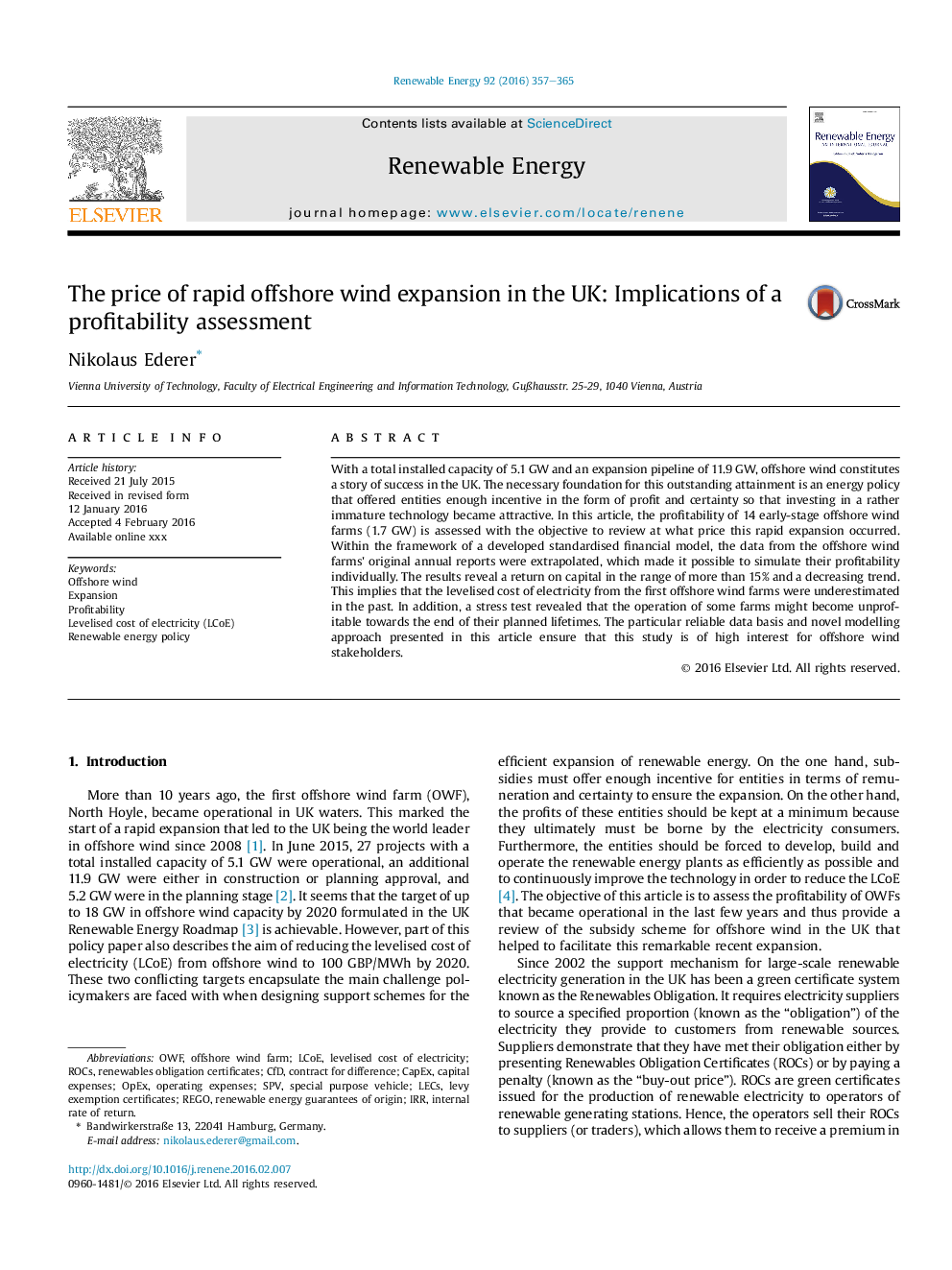| Article ID | Journal | Published Year | Pages | File Type |
|---|---|---|---|---|
| 6766033 | Renewable Energy | 2016 | 9 Pages |
Abstract
With a total installed capacity of 5.1Â GW and an expansion pipeline of 11.9Â GW, offshore wind constitutes a story of success in the UK. The necessary foundation for this outstanding attainment is an energy policy that offered entities enough incentive in the form of profit and certainty so that investing in a rather immature technology became attractive. In this article, the profitability of 14 early-stage offshore wind farms (1.7Â GW) is assessed with the objective to review at what price this rapid expansion occurred. Within the framework of a developed standardised financial model, the data from the offshore wind farms' original annual reports were extrapolated, which made it possible to simulate their profitability individually. The results reveal a return on capital in the range of more than 15% and a decreasing trend. This implies that the levelised cost of electricity from the first offshore wind farms were underestimated in the past. In addition, a stress test revealed that the operation of some farms might become unprofitable towards the end of their planned lifetimes. The particular reliable data basis and novel modelling approach presented in this article ensure that this study is of high interest for offshore wind stakeholders.
Keywords
Related Topics
Physical Sciences and Engineering
Energy
Renewable Energy, Sustainability and the Environment
Authors
Nikolaus Ederer,
